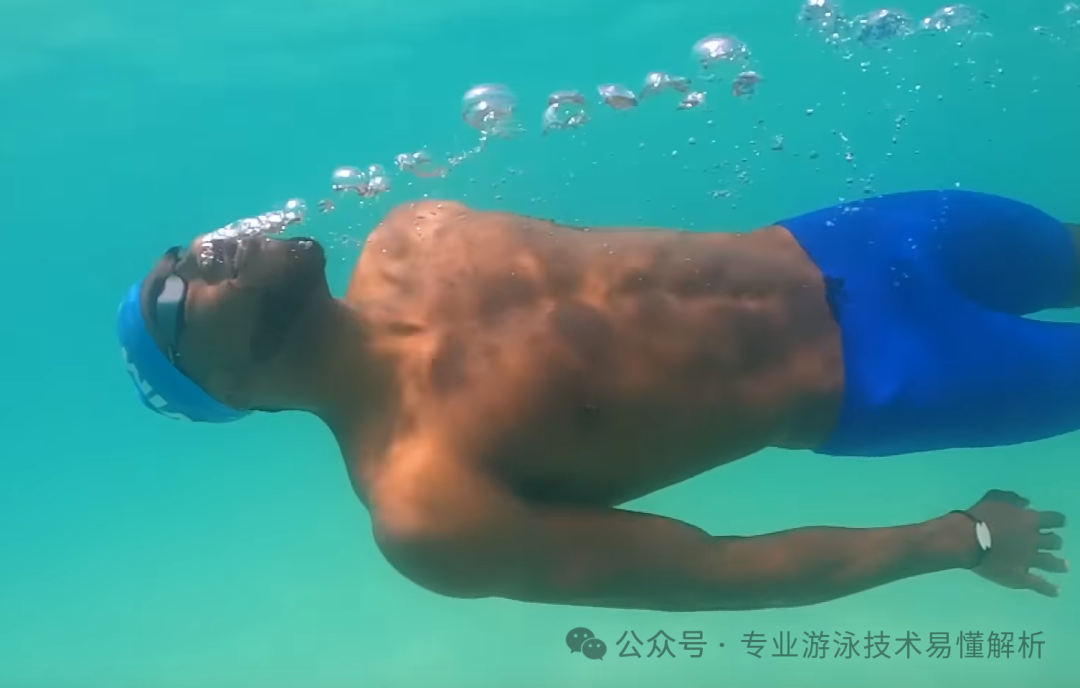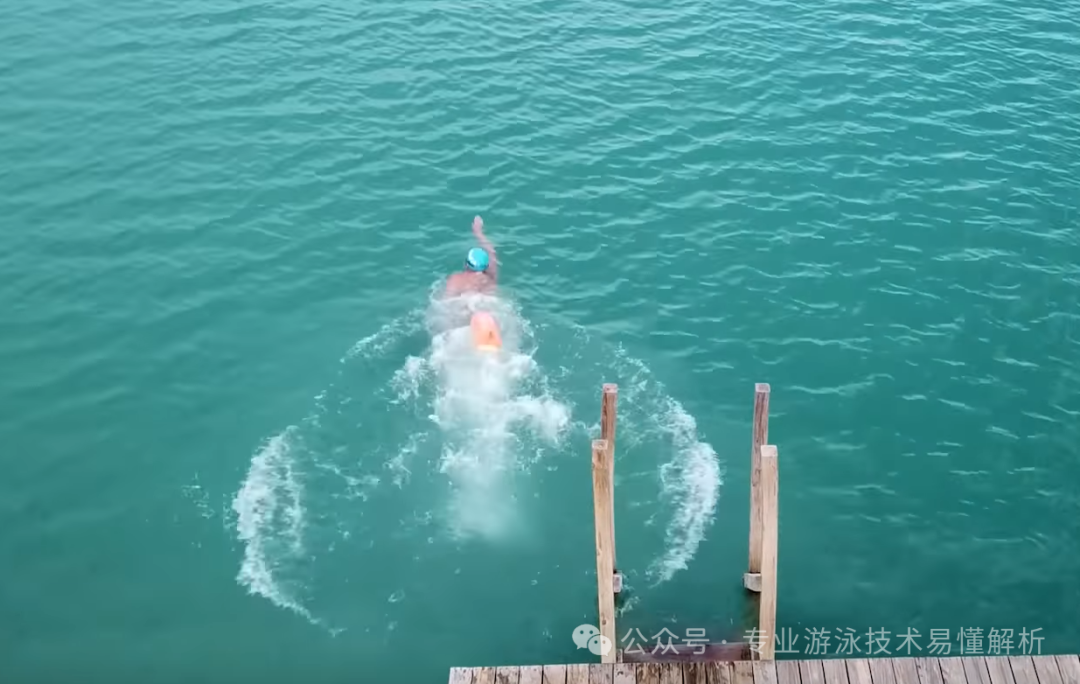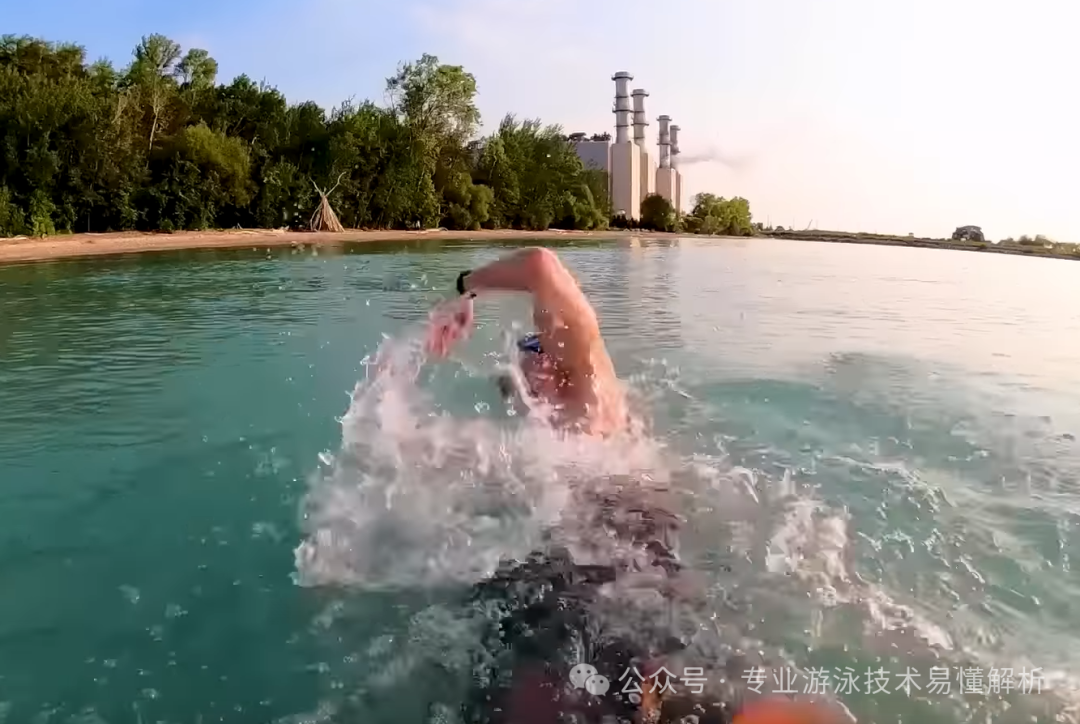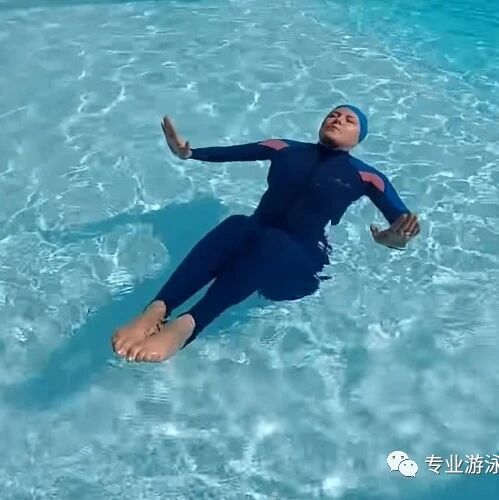The essence of swimming is water buoying the body, water propelling water, and water cradling the swimmer.


Swimming is the art of interacting with water—yet water will always be more powerful than humans. To escape being at the mercy of the water, people must first understand and become intimately familiar with its nature. Only by recognizing their own limitations and gradually expanding those boundaries through careful adaptation to the water can individuals enhance their ability to thrive in this environment—and ultimately gain a measure of control. This sense of agency, however, hinges on two critical factors: first, the continuous improvement of one’s own capabilities; and second, the realization that the extent of such growth is ultimately bounded by an inherent respect for the power of water itself. If either of these conditions falters, disaster is inevitable. After all, this principle applies not just to swimming, but to life itself and every aspect of existence.
The above are objectively observable facts. For those prone to arrogance, it might be easier to rephrase them—perhaps by saying something like, "Mastering water; those who truly understand its flow"—and so on. Meanwhile, for individuals with a healthy sense of self-awareness, continually honing their own abilities is simply doing everything within their power, while maintaining humility and reverence reflects an acceptance of life’s inevitable uncertainties.
Moreover, every success one achieves ultimately stems not only from personal hard work and determination but also from the favorable conditions and circumstances that surround us—what we often call "the right timing, fate, and destiny." True wisdom lies in avoiding the trap of attributing all credit solely to oneself, thus ensuring that victory doesn’t breed pride and defeat doesn’t lead to despair. Instead, one can rise to even greater heights, much like the legendary martial art described in Jin Yong’s novel *The Heaven Sword and Dragon Saber*: "Let others grow stronger—let them rage as they may; the gentle breeze still caresses the hillside. Let them act recklessly—let the bright moon shine upon the vast river. If they choose cruelty or malice, I’ll draw upon my own unwavering inner strength."
Originally, I was going to write about swimming, but somehow ended up rambling on—treating Jin Yong’s novels as if they were philosophy or even Buddhist teachings. Anyway, back to the main topic: swimming.

1. The buoyancy of water—ranging from tiny objects to massive ocean liners weighing tens of thousands of tons.
Throw a stone into water, and it sinks; toss a piece of wood, and it floats. A simple observation tells us that stones are heavy while wood is light—but then why doesn’t a massive ocean liner sink? Clearly, weight alone isn’t the reason; the key lies in the buoyant force of water. After all, harnessing this buoyancy is what allows objects—and even large vessels—to stay afloat in the first place. That’s why the most fundamental skill in swimming is learning to float: being able to quickly relax your body at any moment so that buoyancy can take effect—this ability is a clear sign of strong water confidence.
The deeper a boat sits in the water, the greater its buoyancy—this is scientifically known as displacement. People with broader builds experience more buoyancy, causing their "waterline" to sit deeper, while those who are leaner have less buoyancy, resulting in a shallower waterline. If both groups want to swim at the same speed, someone with a fuller build will need to paddle slightly deeper, whereas a leaner person can paddle more shallowly.
When paddling a small boat, there’s no need to immerse the paddle blade too deeply in the water—doing so would only waste valuable paddling power. Conversely, when rowing a large vessel, if the paddle blade is dipped too shallowly, even the strongest paddler won’t be able to generate enough force to propel the boat effectively, leaving the boat painfully slow.

2. The thrust of water—waves on the surface, ripples beneath, and the boundary between them forming undulating waves.
Once water lifts a person—or rather, after someone becomes comfortable in the water and learns to float—how exactly do they start swimming forward? Intuitively, most people would say it’s by stroking with their arms and kicking like a frog. And while that’s correct, if our understanding of swimming stops there, then it’s actually incomplete.
Once a person floats on water, they move forward by "water pushing water." At the same time, the person remains buoyant on the surface, allowing them to glide effortlessly along with the water—much like how, in land-based sports, the friction between your feet and the ground propels you forward. Similarly, in swimming, your arm strokes and leg movements merely generate ripples that push against the water itself, carrying the floating body along and helping you achieve your goal of moving through the water.
Understanding this can help swimmers refine their freestyle arm strokes and breaststroke kicks, enabling them to significantly increase swimming speed—without needing to exert more physical effort.
Take the freestyle arm stroke as an example: When first learning, swimming forward with just the arms moving through the water yields the worst results. But once you grasp the importance of "catching" the water—initially by drawing your arms back to "grab" it—the technique improves significantly. Yet even then, you realize that if you don’t follow up quickly with the actual pull-through motion, the water you’ve already "caught" starts slipping away too soon. This leads to the insight that after catching the water, you need to accelerate the pull—but not so aggressively that the momentum causes more water to escape. So you refine your stroke again, finding the perfect balance: accelerating smoothly without overexertion. When you finally combine the catch-and-pull motions into a seamless, fluid rhythm, your swimming efficiency reaches its peak. Strangely enough, though, when you analyze your outward movements at this advanced stage, they may look almost identical to those from your very first attempts—when you hadn’t yet mastered the concept of "catching" the water. Yet beneath the surface, the underlying technique and effectiveness have undergone a dramatic transformation, proving that true mastery often hides in simplicity.
Taking the frog kick as an example, many coaches traditionally break down the movement into three distinct steps: flipping the feet, performing the outward sweep, and then quickly bringing the legs together. In reality, however, the outward sweep of the frog kick actually serves to "grab" the water, while the final "clamping" motion is responsible for pushing the water backward. The true frog kick technique requires executing the sweep and clamping simultaneously—meaning that as the legs move outward, the thighs should also engage forcefully to bring them together in a clamping action. This coordinated movement creates a powerful "squeeze," effectively propelling the water between the legs outward—and ultimately using that force to push the body forward through the water. Unfortunately, many swimmers mistakenly believe that the outward sweep alone provides the primary driving force for their stroke. But here’s the key point: the surface area of the foot is quite limited. If a swimmer focuses solely on the outward sweep without incorporating the clamping motion—or worse, performs the sweep first and then tries to clamp afterward—their legs simply won’t generate enough propulsion to move the body efficiently through the water.

One WeChat official account shares swimming tips, while another focuses on software insights, online resources, and reading experiences.
Thank you for your supportive and encouraging likes, as well as the comments that spark meaningful conversations—and even more, we’d love to see those shares and retweets!
Related Articles

When doing freestyle breathing and turning your head, don’t look up at the sky—here are three key tips to master natural breathing.

Three-step guide to learning swimming: Master the basics in one week, achieve buoyancy in two weeks, and perfect the breaststroke in three weeks.
